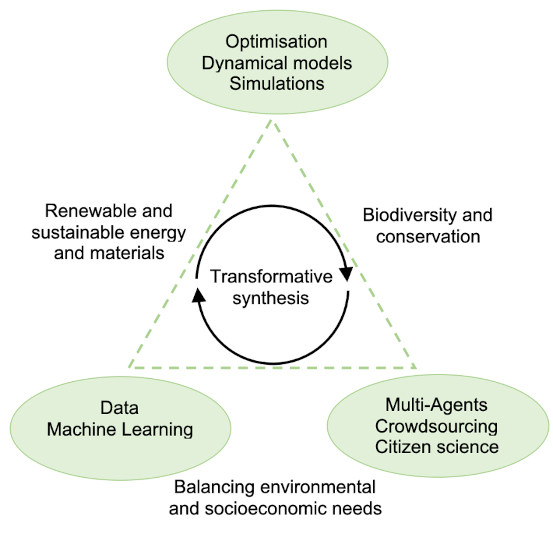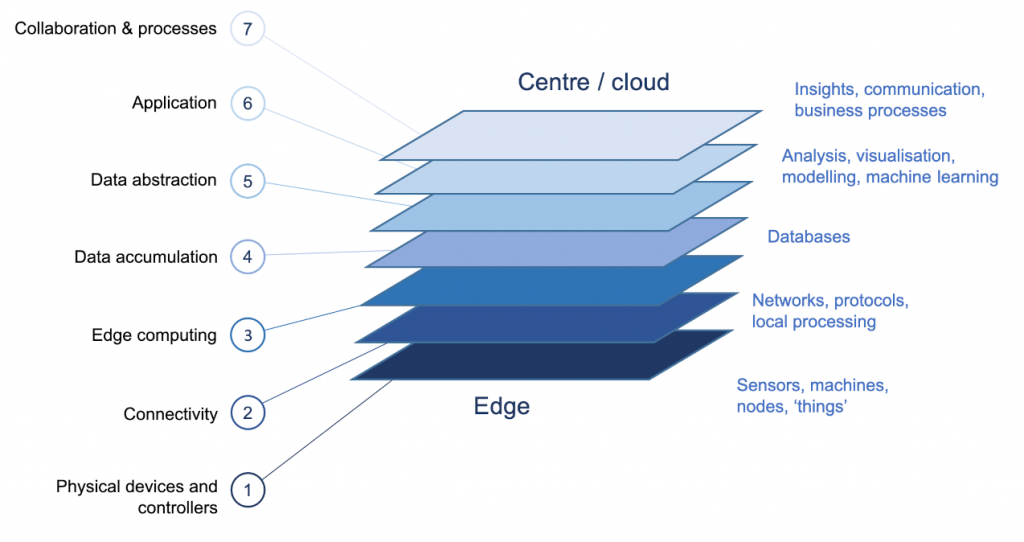What is computational sustainability?
The foundations of computational sustainability as a field of research were laid by Carla Gomes in 2008 with the establishment of the Institute for Computational Sustainability (ICS) at Cornell University. Its brief was to pursue a transformative research agenda and to concentrate the attention and efforts of computer scientists on the challenges around sustainability. Calling on them to play a key role in increasing the efficiency and effectiveness in the management and allocation of natural resources, Gomes defined the aim of computational sustainability to be
“to develop new computational models, methods, and tools to help balance environmental, economic, and societal needs for a sustainable future”
Work in the field of computational sustainability is inherently interdisciplinary, as is action on sustainable development in general. The ICS defines the concept of transformative synthesis in which solutions are developed out of a dialogue between theoretical computer scientists and experts in the problem domain.

The computational sustainability research landscape (Adapted from Gomes et al., 2019)
The process, as shown in the illustration above, recognises the pervasive nature of computing technology with its potential to disrupt traditional thinking and to reveal previously hidden patterns and relationships. Computational sustainability may therefore be defined as
“the computer scientific branch of the interdisciplinary field of sustainability research, an applied science about the research in sustainable solutions and their implementation”
The range of topics that fall under the banner of computational sustainability is very wide. It is also an associative field in the sense that work done for other reasons and without explicit reference to computational sustainability could still sit comfortably under its umbrella. One of the main concerns of sustainability in general is the efficient husbandry of resources. From that perspective, many situations can be represented as optimisation problems where machine learning approaches are applicable. However, machine learning relies on the availability of sufficient quantities of reliable data, and data acquisition – for example, through sensors embedded in the environment – is a common requirement. One particular technological approach that is well-suited to addressing the various dimensions of a problem of this type is the new field of the Internet of Things (IoT). The Cisco IoT reference architecture shown below provides a generic and flexible framework that can be used to guide the development of a solution from interface with the physical environment right through to the extraction and communication of insights from complex data processing.

The Cisco seven-layer IoT reference architecture (Cisco, 2014)
While it is not the only approach that can be brought to bear on issues of sustainability, the characteristics of the IoT concept make it a natural fit for sustainability challenges. Collecting data from a physical environment can be difficult for several reasons:
- Geographical scale: Some problems require data from very large areas. Monitoring and modelling the distribution of plastic waste in the ocean would be a good example.
- Complexity: Problems of sustainability often involve heterogeneous factors that cut across multiple domains. Optimising the distribution of food products in a city in order to minimise waste might be one such area.
- Cost: Although important, some sustainability challenges do not present obvious opportunities for commercial operators to make profits and therefore need to be funded in other ways. Monitoring and protecting biodiversity could fall into this category.
Recent research by the World Economic Forum concluded that 84% of IoT deployments addressed the UN Sustainable Development Goals to some extent. Because of the large number of sensors involved, IoT nodes are designed to be simple, cheap and robust. They do not require any fixed infrastructure and can be deployed and maintained with very little effort. Some are even biodegradable such as those used in health applications. With its emphasis on low cost, low maintenance and low energy consumption, the IoT paradigm addresses by design many of the requirements for sustainability research and solutions.
IoT is just one way of articulating a technical response to sustainability issues. Data visualisation techniques and socio-technical investigations are just two other approaches among many that might be deployed depending on the nature of the problem. Regardless of the specific technology involved, the defining characteristic of computational sustainability is its clear focus on safeguarding the quality of life of future generations while still satisfying the needs of the present.
References
Cisco. (2014). The Internet of Things Reference Model. Cisco. Retrieved from http://cdn.iotwf.com/resources/71/IoT_Reference_Model_White_Paper_June_4_2014.pdf
Gomes, C. P. (2009). Computational Sustainability: Computational Methods for a Sustainable Environment, Economy, and Society. The Bridge (Engineering), 39(4), 5–13. Retrieved from https://www.nap.edu/read/12821/chapter/7
Gomes, C. P., Dietterich, T., Dilkina, B., Stefano, E., Fang, F., Farnsworth, A., … Zeeman, M. Lou. (2019). Computational sustainability: Computing for a better world and a sustainable future. Communications of the ACM, 62(9), 56–65. http://doi.org/10.1145/3339399
Lässig, J., Kersting, K., & Morik, K. (Eds.). (2016). Computational Sustainability. Springer Nature. http://doi.org/10.1007/978-3-319-31858-5
Li, Y., Chen, W., & Lu, L. (2020). Wearable and Biodegradable Sensors for Human Health Monitoring. ACS Applied Bio Materials. http://doi.org/10.1021/acsabm.0c00859
World Economic Forum. (2018). Internet of Things Guidelines for Sustainability. Retrieved from http://wef.ch/IoT4D

